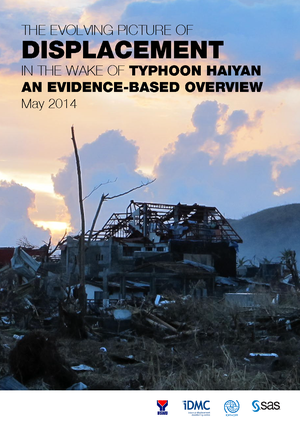We are happy to present “The Evolving Picture of Displacement in the Wake of Typhoon Haiyan: An Evidence-based Overview”. This report was analyzed and written in collaboration with the Government of the Philippines’ Department of Social Welfare and Development (DSWD), the Norwegian Refugee Council’s Internal Displacement Monitoring Centre (IDMC), the International Organization for Migration (IOM) and the SAS Institute. The findings of this report are preliminary.
This report shows how gaps in the information - and in the way that information is created and shared - leaves some of the most vulnerable people invisible and potentially excluded from sustainable return or relocation and resettlement options. With the next typhoon season just around the corner, the importance of recognizing their particular needs becomes all the more urgent. This report draws together information from a wide range of sources to provide an overall understanding of displacement patterns and trends and of related needs and issues faced by displaced men, women and children in geographical areas and settings they have been located. It analyzes some of the latest displacement-relevant information available focusing on government data related to displacement and information on collective displacement sites monitored by the Camp Coordination and Camp Management (CCCM) cluster. It also puts this information in the context of the wider displacement picture informed by earlier secondary data reviews and multi-sector as well as sector specific information from different clusters. In doing so, it also highlights apparent gaps in information that are needed for a more comprehensive understanding of the entire displacement situation and outlines the information needed to effectively support assistance to displaced men, women, boys and girls.
Through the use of SAS Visual Analytics, this report also highlights the evolution of key sectorial needs and gaps in service provision to families living in collective displacement sites since the beginning of the emergency as monitored by the Displacement Tracking Matrix (DTM) and six months after. These trends and insights can be further explored on CCCM’s interactive dashboard developed in close collaboration between IOM and SAS at http://philippineresponse.iom.int/six-month/dtm-dashboard (login: cccmguest@gmail.com and password: IOManalytics1).
We hope you enjoy the report. It can also be found at http://philippineresponse.iom.int/

